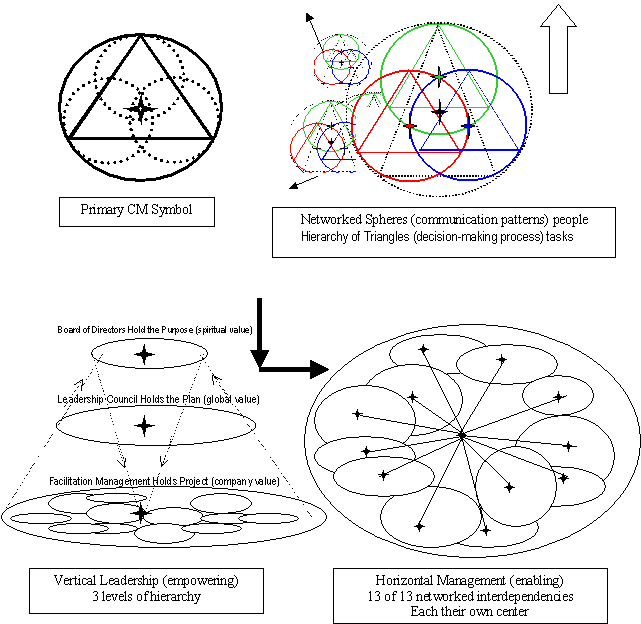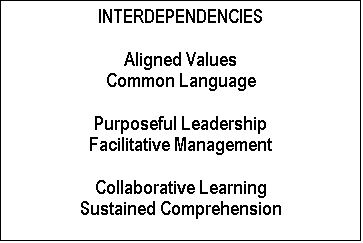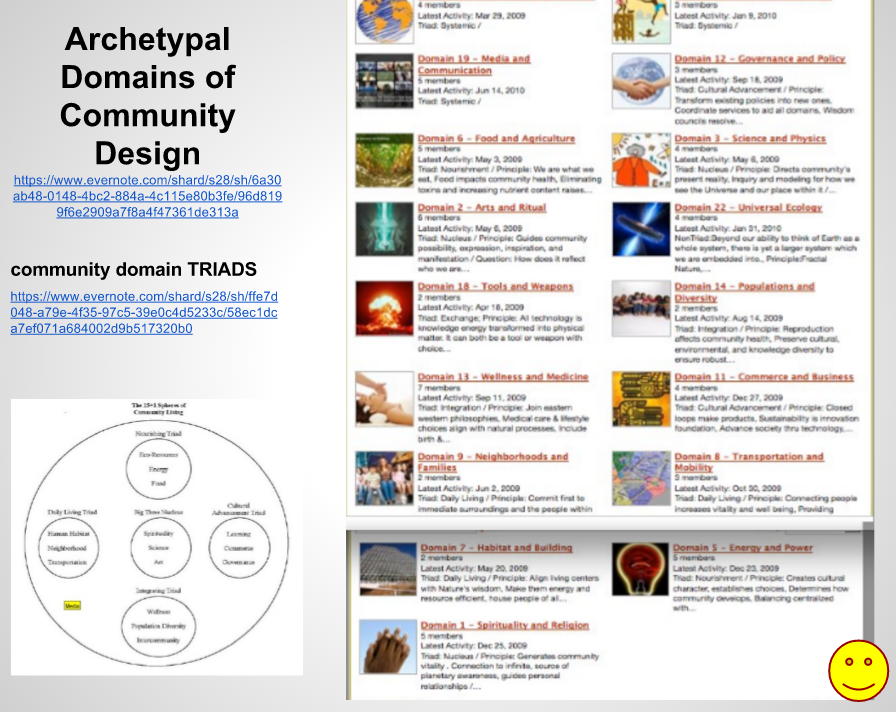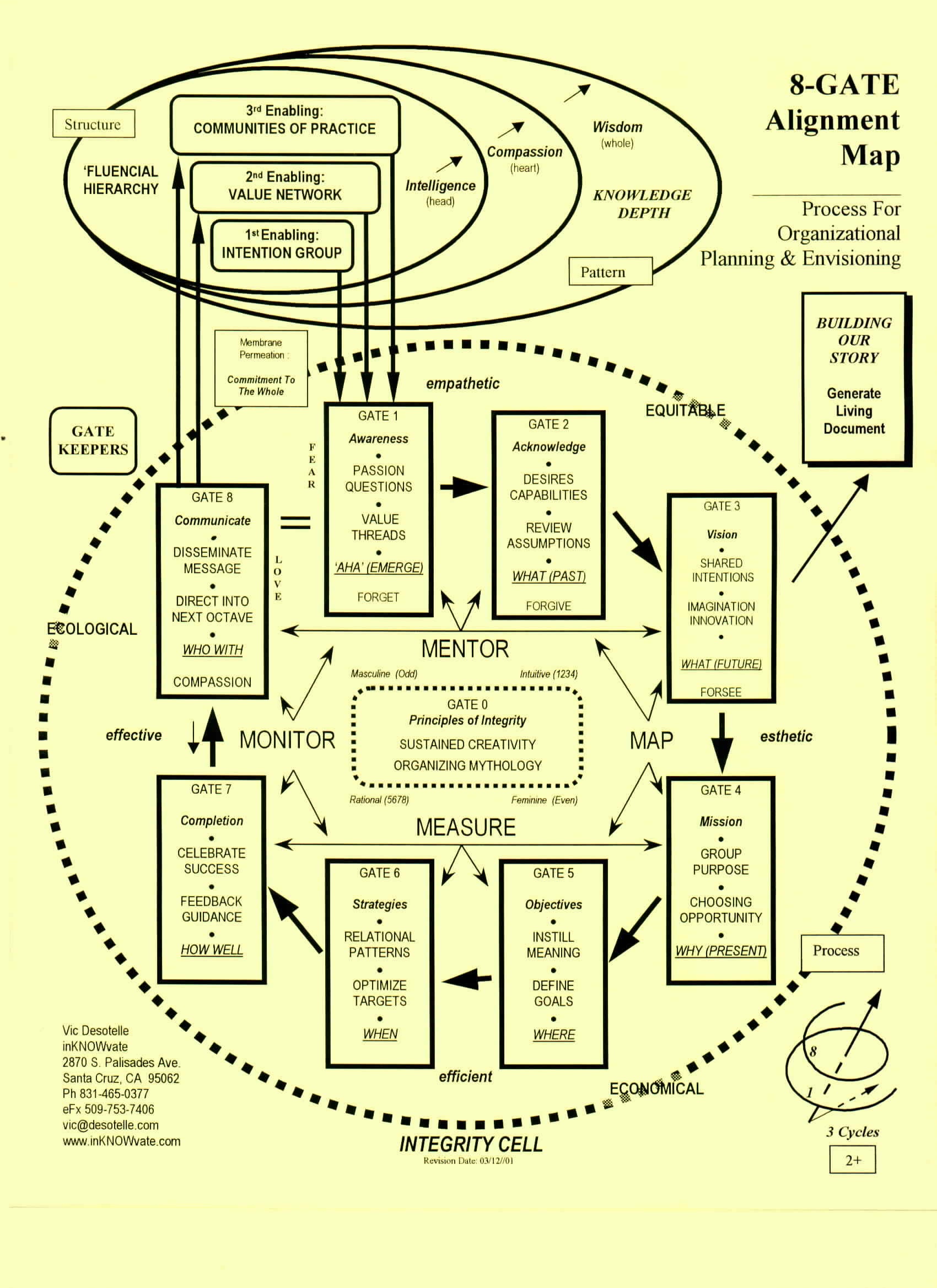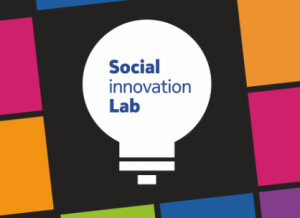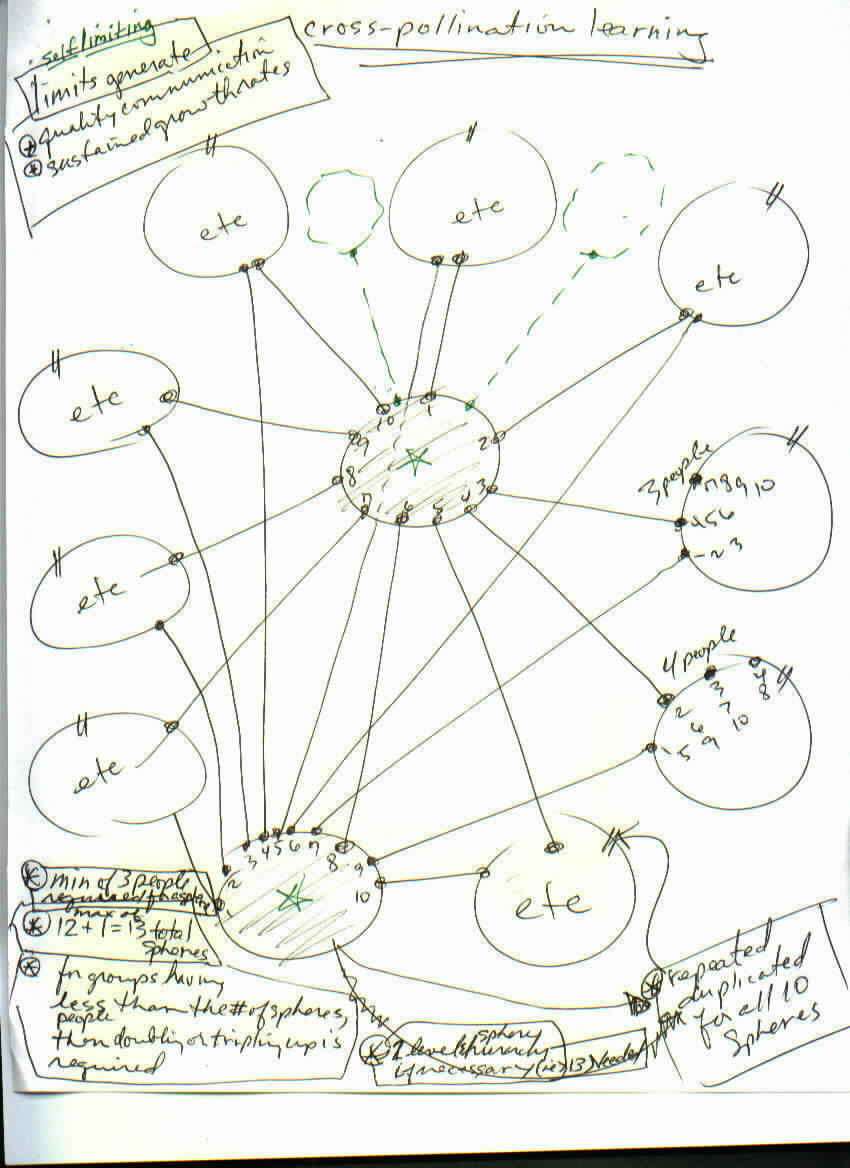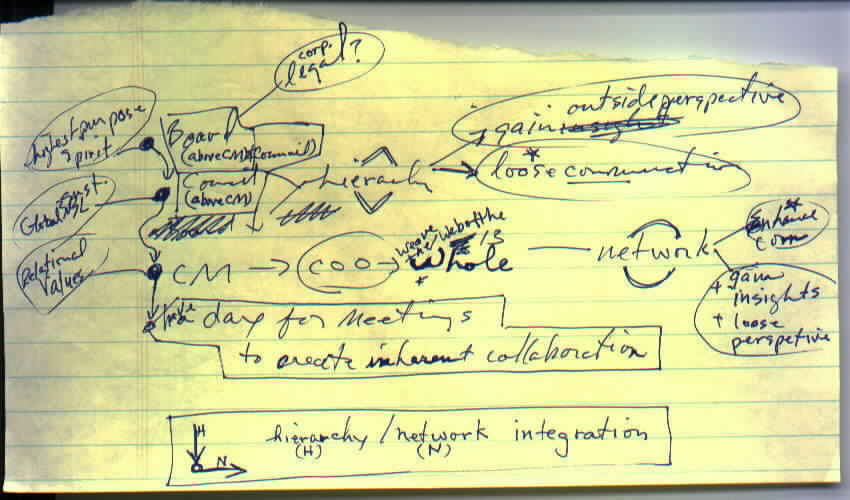Concentrix Management: How To Cross Pollinate Innovation Teams
Concentrix Management (CM) is a model for distributing and managing information with the intent to cross pollinate ideas and concepts across sub-groups so that each part of the system knows about the ‘whole’ (of which all working groups within it reside) without overloading any one person.
——————————————————–
We are each at the center of our own Universe.
How does yours relate to mine?
——————————————————–
CM is an important communications tool that allows innovation to emerge with an enterprise. It is a way of distributing (rather than isolating) knowledge capital within an organization. It is based on new physics theory that proposes there are infinite centers to the Universe. Thus each of us defines our own unique perspective; one that is partial and necessary within an infinite whole. At the same time, each of us carries responsibilities for identifying with other unique parts, thereby sharing knowledge both within our own group(s) also with others that are beyond the boundaries of our group’s identity. These ‘crossings’ are otherwise known as COMMUNICATION.
Thus, CM allows for broad levels of interdependent knowledge sets to be transferred and stored within different sub groupings (such as divisions, committees, etc.) of a greater whole (such as a company, community, or other organizing fractal). This interdependent webbing process creates an inherently more sustainable system than one which isolates knowledge through traditional proprietary or need-to-know behaviors. It encourages relationships through shared trust rather than through today’s more traditional ownership method for containing knowledge. The result is an enterprise that is not only more resilient to change, more innovative, and responsive to its surrounding environments and markets.
Using CM, a company’s behavior becomes ‘morphic’ (new myth) rather than ‘phoenix’ (old myth) oriented by nature, meaning that the whole-system can now shift itself from one state of being into another without a physical death in between. Just as the phoenix bird needed to die in order to generate new life (old myth), instead now our organizations can begin to rebirth themselves more like a caterpillar does as it changes into a butterfly (new myth).
CM also addresses community size issues and helps to incorporate aspects of human(e) behavior that collaboration tools do not address well. Tools look at ‘informational relationships’ and not ‘communal relationships’. You know; that (de)humanizing part we keep trying to avoid? This model keeps groups small and safely interactive, even when the overall size of the community gets large. This approach can be applied to create safe environments so that all are heard, not just a few, while also generating a communication system that keeps everyone within their bandwidth of time to manage. It also helps to accelerate knowledge creation through the differential learning that occurs across groupings.
Essential for this type of transformation, is ‘Concentrix Management’, which allows the enterprise to unlock itself from a common center, way of thinking, or method of behavior.
CM Fundamental Architecture
NOTES
A Guide tool for generating collaborative corporate principles, strategy, and realizing integration of Community Domains
——————————————————-
Formulating group alignment flow-structures :
A Three Phase Transformation Process
Methods for Developing Social Capital
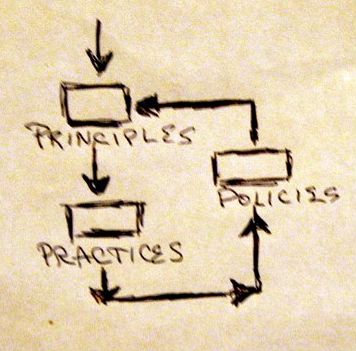 Combining integrity flow principles :
Combining integrity flow principles :
——————————————————-
Fundamental Strategy Developments
1- CM provides method for delegation of responsibilities
2- Ideas relating to ‘Building Sustainable Learning Communities’ using concept of creating a ‘Sustained Technology Renaissance’ for the 21st century.
3- Decision Making Process Chart : 1-What, 2-Time Frame, 3-Considerations, 4-Costs, 5-Team(s), 6-‘Fluential Resources (input/output)
4- Method(s) for reporting: (i.e. communication to other stakeholder individuals and teams
5- An info-structure based on communication
6- Project investment strategy to be based on value-add money sourcing
7- Open door policy (contracts describe alternative view … privacy yes, proprietary no)
8- Description of an RTC Free Agent
9- Allow agreement
10- Whole-part-whole cycles of a meeting
11- A mediation process for when issues are not resolvable within supporting spheres (managed by main RTC large sphere)
12- Use of business template to account for time and money and people issues
13- A protocol guide generated by multi-sphere collaboration, managed by main RTC large sphere)
14- Permission for groups to dissolve (core pod as example)
15- Feedback learning loops that includes a synthesis stage: experiment (source of innovation), evaluate (based on the question), correct (no absolute answers)
16- Tactical (immediate term activities) vs strategic (long term envisioning)
17- Communication Tools: Virtual: Use of collaboration tools such as Google Groups, Sites, and Docs for online communications, Physical: every Wednesday is an open-technology meeting to align CM ‘fluential spheres
18- Board’s responsibility/role
19- Relationships (circle) and strategic development (triangle)— fractal nature (one in the many in the one) spherical onion-like ( center 1 -> first layer 12 -> second layer 44)
20- Multi-centered organization
21- 12 cells around 1 cell (total of 13 centers)
22- Simplest form of company (internal community)
23- Each of 13 cells responsible for/to 12 other cells within company, first layer of onion
24- Simplest form of stakeholder relations (external relations)
25- Each of 13 cells responsible for/to 44 cells outside of company, second layer of onion
——————————————————-
Concentrix Management and Collaboration Structures
(Items in the Package)
– FUNDAMENTALS: rules?, and/or principles of CM (must be simple and no more than one page) (dot in center)
– TASKING: time, money, resources, people chart/array
– COMMUNICATIONS: people responsibility connection map/matrix
– 3BL (triple bottom line): Conceptual tools for integrating sustainable management into planning and practices
– ORGANIZATIONAL LEARNING: practices, schedule, procedure, principles for collaborative learning experiences
– Individual Sphere meetings use Learning Circle process diagram
– Individuals from each group are self-selected as responsible for each other group to report and note other group alignment issues
– Sphere PROTOCOLS
– PROCEDURAL: Individual – Each sphere creates and manages their own protocol procedure doc and make it available to all other spheres
– REPORTING: Collective spheres- All spheres together decide on a common reporting template to be used by all spheres for cross-sphere reporting (monthly or weekly) RTC sphere manages it)
– Both single and group of spheres meets on a Common day for all meetings, Monthly Learning Exchange Market, Weekly Spheres Meetings: (except for day of exchange market)
– Groups are responsible to each other via listserv reporting and scheduling
– Cross-pollination of spheres done by each individual in each sphere choosing 1 or more other spheres to connect with someone in those spheres (not necessarily facilitator for they are merely a focal point for delegation, report holding, etc
-Organizational charting
– Global circle people connections (org-like) chart goes with individual spherical org chart
– Global hierarchical task chart describing basics: what, time, costs
———————————————————
Keys to concentrix management strategy development:
– how to create a learning exchange marketplace (dynamic process)
– organizational geometries (dynamic structure) [a future study]
———————————————————
Collaboration structures often used (4 primary types)
Type 1: CONVERSATION CAFES
Conversations done irregularly (1 to 2 month window), for individuals … company staff & external stakeholders, the blood/fluid of the organization, amorphous [process/flow], 13×12=156 maximum number of employees
Type 2 : POD CLUSTERS
Meetings done weekly at same time, for company group relations, the emotions/personality of the company boundary(s) [patterns/identity], 13 fixed groups of spheres
Type 3: COLLABORATORIES (or Colabs)
Held monthly, all involved, (for whole company, managed by 13 self-selected facilitators) the body/shape of the organization, crystalline [structure/constructs]
Type 4: CHARRETTE ACCELERATORS
For internal/external stakeholder alignment, provides the conscious movement/direction, managed by OL team, the spirit/essence of the organization [wholeness, integration of structure, pattern, process]

